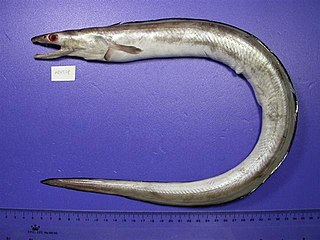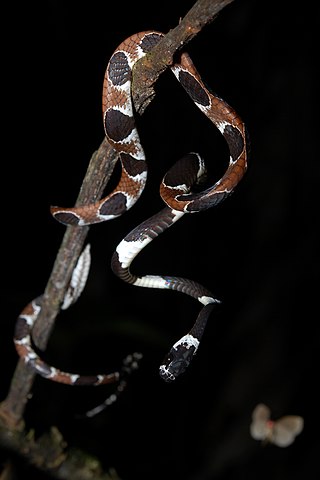Related Research Articles

Croatia, officially the Republic of Croatia, is a country at the crossroads of Central and Southeast Europe. It shares a coastline along the Adriatic Sea. It borders Slovenia to the northwest, Hungary to the northeast, Serbia to the east, Bosnia and Herzegovina and Montenegro to the southeast, and shares a maritime border with Italy to the west and southwest. Croatia's capital and largest city, Zagreb, forms one of the country's primary subdivisions, with twenty counties. The country spans an area of 56,594 square kilometres, hosting a population of nearly 3.9 million.

FIFA is the international governing body of association football, beach football and futsal. It was founded in 1904 to oversee international competition among the national associations of Belgium, Denmark, France, Germany, the Netherlands, Spain, Sweden and Switzerland. Headquartered in Zürich, Switzerland, its membership now comprises 211 national associations. These national associations must each also be members of one of the six regional confederations into which the world is divided: CAF (Africa), AFC, UEFA (Europe), CONCACAF, OFC (Oceania) and CONMEBOL.

Uruguay, officially the Oriental Republic of Uruguay, is a country in South America. It shares borders with Argentina to its west and southwest and Brazil to its north and northeast; while bordering the Río de la Plata to the south and the Atlantic Ocean to the southeast. It is part of the Southern Cone region of South America. Uruguay covers an area of approximately 181,034 square kilometers (69,898 sq mi) and has a population of an estimated 3.4 million, of whom around 2 million live in the metropolitan area of its capital and largest city, Montevideo.

Opossums are members of the marsupial order Didelphimorphia endemic to the Americas. The largest order of marsupials in the Western Hemisphere, it comprises 120+ species in 19 genera. Opossums originated in South America and entered North America in the Great American Interchange following the connection of North and South America.

New Zealand is an island country in the southwestern Pacific Ocean. It consists of two main landmasses—the North Island and the South Island —and over 700 smaller islands. It is the sixth-largest island country by area, covering 268,021 square kilometres (103,500 sq mi). New Zealand is about 2,000 kilometres (1,200 mi) east of Australia across the Tasman Sea and 1,000 kilometres (600 mi) south of the islands of New Caledonia, Fiji, and Tonga. The country's varied topography and sharp mountain peaks, including the Southern Alps, owe much to tectonic uplift and volcanic eruptions. New Zealand's capital city is Wellington, and its most populous city is Auckland.

Mastodonsaurus is an extinct genus of temnospondyl amphibian from the Middle Triassic of Europe. It belongs to a Triassic group of temnospondyls called Capitosauria, characterized by their large body size and presumably aquatic lifestyles. Mastodonsaurus remains one of the largest amphibians known, and may have exceeded 6 meters in length.
Edaphodon was a fish genus of the family Callorhinchidae. As a member of the Chimaeriformes, Edaphodon was a type of rabbitfish, a cartilaginous fish related to sharks and rays. The genus appeared in the Aptian age of the Lower Cretaceous and vanished in the Pliocene. It was most prominent during the Late Cretaceous. Many Edaphodon species were found in the Northern Hemisphere, but species from the Southern Hemisphere are also known.

Hapalodectes is an extinct genus of otter-like mesonychids from the Late Paleocene to Early Eocene, some 55 million years ago. Although the first fossils were found in the Eocene strata of Wyoming, the genus originated in Mongolia, as the oldest species is H. dux, which was found in Late Paleocene strata in the Naran Bulak Formation.

Cyclotosaurus is an extinct genus of temnospondyl within the family Mastodonsauridae. It was of great size for an amphibian, had an elongated skull up to 56 cm (22 in).

The Muraenesocidae, or pike congers, are a small family of marine eels found worldwide in tropical and subtropical seas. Some species are known to enter brackish water.

The Jebel Qatrani Formation is a palaeontological and geologic formation located in the Faiyum Governorate of central Egypt.
Vectisuchus is a genus of goniopholidid mesoeucrocodylian, known from the Early Cretaceous-age Wealden Group of the Isle of Wight, England. It was a small, piscivorous crocodylomorph with a narrow, elongate snout, and relatively long forearms. The type specimen, SMNS 50984, was found in 1977. When discovered, it was complete and right-side-up, but the posterior portion was lost during excavation. Vectisuchus was described in 1980. The type species is V. leptognathus.

Geophis sanniolus, commonly known as the pygmy snail-eating snake or the pygmy snail sucker, is a species of small snake in the family Colubridae. The species is endemic to Central America and southeastern Mexico.
Procyclotosaurus is an extinct genus of stenotosaurid capitosaurian temnospondyl. The type species is P. stantonensis. In 1904, English paleontologist Arthur Smith Woodward described it as a species of Capitosaurus, C. stantonensis, based on a partial skull known as R 3174. In 1958, the species was assigned to the new genus. It is known from the Lower Keuper, a European stratigraphic unit that was deposited during the late Middle Triassic. Fossils have been found from Staffordshire, England.
Anteophthalmosuchus is an extinct genus of goniopholidid mesoeucrocodylian from the Early Cretaceous of southern England, eastern Spain, and western Belgium.

Catesby's snail-eater, also commonly known as Catesby's snail sucker, is a nocturnal species of nonvenomous snake in the family Colubridae. The species is native to northern South America.

Neivamyrmex is a genus of army ants in the subfamily Dorylinae.
The Bromsgrove Sandstone is a geologic formation of the Sherwood Sandstone Group in England. It preserves fossils and ichnofossils of Chirotherium barthii, and Chirotherium sickleri, dating back to the Middle Triassic (Anisian) period.
Dipsas pratti, known commonly as Pratt's snail-eater, is a species of arboreal snake in the subfamily Dipsadinae of the family Colubridae. The species is endemic to northern South America.

Hyainailouridae ("hyena-cats") is a paraphyletic family of extinct predatory mammals from extinct paraphyletic superfamily Hyainailouroidea within extinct order Hyaenodonta. Hyaenodontids arose during the middle Eocene and persisted well into the middle Miocene. Fossils of this group have been found in Asia, Africa, North America and Europe.
References
- Froese, Rainer; Pauly, Daniel (eds.) (2011). "Oxyconger leptognathus" in FishBase . June 2011 version.